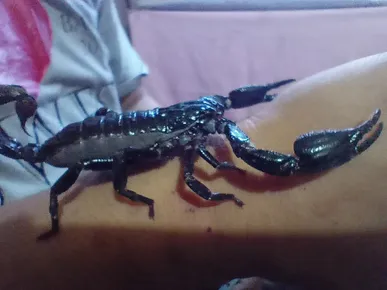Robust burrowing scorpion
The armored figure of robust burrowing scorpion is a testament to its resilience, featuring a robust exoskeleton well-adapted for life in arid environments. With nocturnal habits, this organism scours the terrain under the cloak of darkness, its diet omnivorous, ranging from insects to small vertebrates. With specialized sensory organs, it detects prey and predators alike, navigating the subtleties of its surroundings with remarkable precision.
















![]()

![]()

![]()

![]()

![]()









![]()
